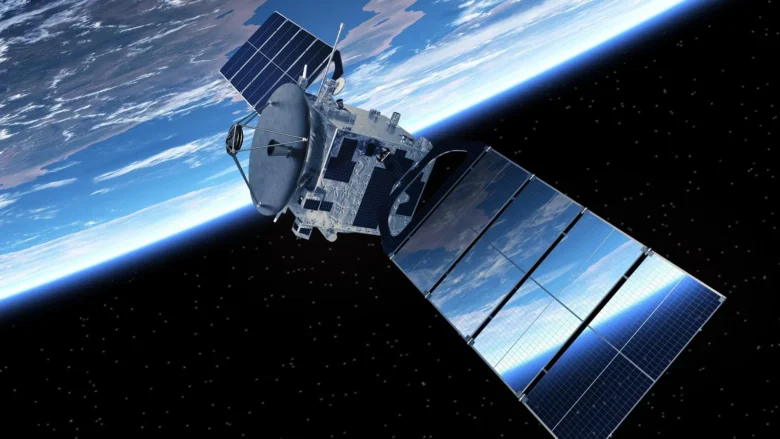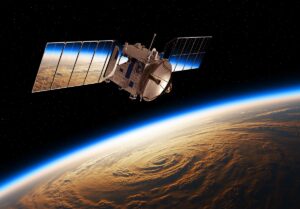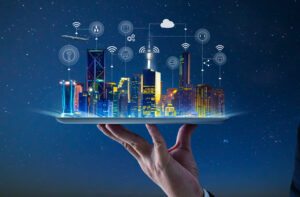Space exploration is making unprecedented progress as cutting-edge technologies change the way we study and understand the universe. Innovations such as reusable rockets, advanced propulsion systems, and the use of artificial intelligence (AI) in space missions not only make us more powerful, they also make space travel more efficient and environmentally friendly. This article discusses the major technological developments in space exploration and how they will change the way humans travel to space in the future.
1. Reusable Rockets
The invention of rockets that could be used multiple times was the most important step forward in space technology. In the past, rockets were used once and then thrown away, making space travel very expensive. But companies like SpaceX and Blue Origin have changed that way of thinking and created rockets that can launch, return, and be used again and again. SpaceX’s Falcon 9 and Falcon Heavy rockets have successfully demonstrated that they can do this. This significantly reduces the cost of space travel and increases the number of launches. Reusable rockets are of great importance for space travel. It allows missions to become more frequent, accelerating scientific research and commercial opportunities. Launching things into space is better for the Earth if rockets can be used over and over again. This technology makes space travel more environmentally friendly and cost-effective. It also brings us closer to ambitious goals, such as sending people to the moon and Mars.
2. High-tech Propulsion System
To make space travel possible, propulsion technology must continue to develop. Although chemical rockets were powerful in the past, they were not fast enough and could not consume large amounts of fuel. More advanced propulsion equipment is needed to reach more distant places like Mars. Ion propulsion is a promising technology that uses electric fields to accelerate ions and generate thrust. Compared to chemical rockets, ion propulsion systems are very efficient and can operate faster and longer. Nuclear thermal propulsion (NTP) technology is another major advance. It heats the propeller and generates power. NTP rockets are better suited for long-term travel to Mars and other distant places because they are more efficient and have more thrust than chemical rockets. These high-tech propulsion systems are important for reducing travel times and making deep space exploration easier.
3. Use of AI in Space Missions
Artificial intelligence (AI) is becoming increasingly important in space travel. Artificial intelligence technologies such as machine learning and autonomous systems make spacecraft smarter and enable more difficult missions. NASA’s Mars rovers, such as Curiosity and Perseverance, use artificial intelligence to walk on the surface of Mars without human assistance. They do this by avoiding obstacles and choosing the best route themselves. Being able to do this is necessary to conduct in-depth scientific research in difficult, remote places. Artificial intelligence is also used to look at large amounts of space data. Scientists cannot process and understand data from telescopes, satellites, and rovers as quickly and correctly as machine learning algorithms. By doing this, scientists can search for new objects in space, find possible landing sites, and look for signs of life on other planets.
4. Satellite and Space Telescope Technology
Space telescopes and satellites are important tools for exploring space because they provide us with important information and new ideas about the world. New developments in satellite technology make them more useful and expand their capabilities. Thanks to the creation of small satellites called CubeSats, it is now possible to build large constellations to provide better service and greater coverage. The lower cost of building and launching these small satellites opens up space for more scientific research, communications, and surveillance of Earth. Imaging and remote sensing technology continue to improve, making satellites and space telescopes more useful. High-resolution cameras and improved sensors make it possible to observe celestial objects in great detail, allowing scientists to study their composition, structure, and movement. These technologies are changing the way we study and understand the universe, meaning scientists can discover new things.
5. Space Habitats and Life Support Systems
As humans attempt to live on the moon, Mars, and other planets, ways to create space habitats and sustain life are becoming increasingly important. As a place to study long-term human life in space, the International Space Station (ISS) has always been very important. Information collected on the International Space Station is used to plan and build future space habitats that can accommodate more people and enable longer journeys. New life support technologies are needed more than ever for the health and safety of astronauts in space. These systems are responsible for protecting air, water, food, and waste, keeping the world stable and safe. Closed-loop life support systems that circulate water and air enable long-duration missions and reduce reliance on resupply trips.
6. Space Mining and Resource Utilization
Space mining and space resource utilization is a new technology area developed for space travel. Obtaining useful substances such as water, minerals and metals from space rocks such as comets, the moon, or Mars is the idea behind the concept. These resources can support space missions, reduce the need for expensive supplies from Earth, and open up new business opportunities. One of the most important things for space travel is water, which can be used to drink, grow food, and create oxygen. It can also be broken down into rocket fuel, hydrogen, and oxygen. Extracting water from the moon or asteroids could help build camps and refueling stations on the moon, making deep space exploration easier.
Conclusion
Thanks to advances in space exploration technology, we can now explore the world and learn more. With innovations such as space mining, AI-driven missions, and reusable rockets, we are pushing the boundaries of what is possible and opening the door to a new era of space travel. As these tools continue to improve, they will not only help us do better in space, but they will also improve life on Earth. The future of spaceflight looks very bright, and the progress we make today will shape the next big things humans can do.
FAQs
1. What are reusable rockets and why are they important for space exploration?
Reusable rockets can be launched, landed, and used again and again. They make spaceflight cheaper and increase the number of launches, making space exploration more environmentally friendly and economically feasible. Companies like SpaceX are pioneers in the use of rockets like the Falcon 9.
2. How can new energy systems improve space exploration?
Advanced propulsion systems such as ion propulsion and nuclear thermal propulsion are more efficient and faster than chemical rockets. These systems are important for shortening the time it takes to reach distant places like Mars and making deep space exploration easier.
3. What is the role of artificial intelligence (AI) in space missions?
Artificial intelligence technologies such as machine learning and autonomous systems are making spacecraft smarter and carrying out more difficult missions. Artificial intelligence is used to help machines find their way, analyze data, and perform tasks such as launching and repairing satellites. Artificial intelligence also makes space travel safer and more efficient.
4. How do satellites and space equipment help us learn about space?
Space telescopes and satellites are needed to obtain important information and ideas about the world. Recent developments include the creation of high-resolution imaging tools and small satellites called CubeSats. We can use space telescopes like the Hubble Space Telescope and the upcoming James Webb Space Telescope to study distant worlds and look for signs of life on exoplanets.
5. What benefits can mining in space bring?
Space mining is the process of extracting useful substances, such as water, rocks, and metals, from space. These resources can support space missions, reduce demand for terrestrial supplies, and open new commercial opportunities. Water can be used to drink, grow food, and make rocket fuel. On the other hand, precious metals can drive new technologies.



